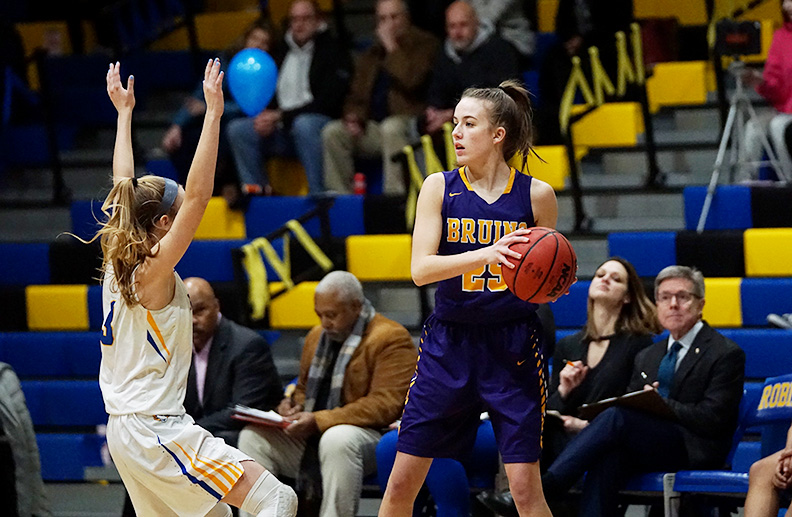Decision training on your team pays huge dividends
“Come on, guys! Make better decisions!”
How many times as fans, players, or even coaches have we heard or used this statement? Coaches demand that players make better decisions, but like anything else it takes practice.

To teach players to make the right decision at the right time, coaches must commit to “decision training.” Decision training is coaching and training designed for athletes to learn how to make effective decisions while physically performing. This means putting players in drills and scrimmages where they’re forced to quickly make a decision. The objective is to make the right decision at the right time.
Decision training attempts to increase thinking processes, cognitive effort or mental work for athletes during practice. This increases levels of decision making, anticipation, planning and interpretation of motor performance.
A three-step process
To properly install decision training into your daily practice sessions, follow the three-step decision training process.
→ Step 1: Decisions. Have players direct attention to a cue. From memory, have them select the correct solution. Solve a problem under time constraints. Make players anticipate a specific event.
→ Step 2: Triggers. Understand cognitive decisions for a player and coach to check if a correct decision was made. Do athletes see what’s happening? Does a “light bulb” come on for the correct response? What’s the purpose if the “perfect drill” is created, but the athlete makes the wrong decision?
→ Step 3: Tools. Randomly use tools such as questioning, video feedback, modeling, call and response, and clock management to prepare players.
The purpose for decision training is to provide coaches with a workable strategy that increases the cognitive effort for their athlete within the basketball-training practice environment. This leads to better practice and game performance.
» ALSO SEE: Preparing for end-of-game situations
Here are some simple basketball drills that almost every coach has used at one point. But here, we’ve added a decision training element.
Layup lines
Players dribble toward the basket from half court. The coach calls out a specific desired layup — regular, reverse, cross, cross middle. The player must take one more dribble after the verbal cue and execute the correct layup.
Chasing-defender layup
These layups begin from different spots near midcourt. The player performing the layup has a 12-foot head start from the chasing defender. Based on what the defender does, the individual must make the most effective decision for the proper layup.
Dribble callout
Decision training attempts to increase thinking processes, cognitive effort or mental work for athletes during practice.
As the player speed-dribbles to half court, the coach calls out a dribble move to be executed 15 feet before the half-court line. That could include a cross, stutter, in and out, around the back, or through the legs. The player then performs the dribble and speed-dribbles down to the endline or heads straight to the basket for a layup or jumper.
This drill is “game like” for guards. It simulates a speed dribble in transition for an offensive player who is attacked by a defender. Making a move to get by the defender is exactly like a situation faced during a game.
Transition into set
A group of players starts on defense. The coach makes a layup, and a designated player inbounds the ball.
Each player runs the court to their designated position as the point guard begins to speed-dribble up the court. Next, the coach calls for the offense to run a transition pass, early offense, set play, etc. The point guard must make the decision, quickly followed by the other four players.
The group of five players must make the correct play and score. Repeat the process up and down the court until the team makes the desired number of baskets. The coach randomly calls a variety of plays during the drill and never calls them in a blocked pattern.
Crunch-time scrimmage
The coach creates two teams and assigns a score, time remaining and, foul situations for both teams on the scoreboard. Each team must analyze their team’s situation and quickly make a decision on their strategy to win the game.
This type of decision training is related to game-based training involving game-like situations. Game-based training has been associated with greater cognitive effort — an important condition for learning. Studies have shown improvements in skill execution and decision-making following game-based training.
Crunch-time scrimmage also places players under different forms of pressure, where they’re forced to make decisions. Game-based training not only improves cognitive skills but also improves specific game-like physical conditioning training.
Crunch-time scrimmage can be manipulated by the coach for a number of different game scenarios. These include: playing with or without a lead; tie score; time remaining; or inbounding the ball.
Mike Budge is a former assistant men’s basketball coach at Chabot College in California.









